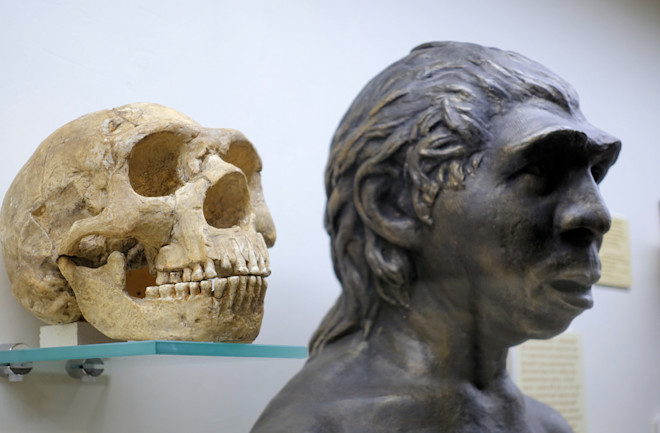Neanderthals, the best understood species of archaic human, often lived in limestone caves that preserved their bones well after death. As a result, archaeologists have found many more of those bones than those belonging to the Denisovan species, a less understood but still important type of early human.
After all, we know that the two interbred, and a new study has attempted to explain how it happened. Conditions were best, the paper states, when the glaciers receded and warm weather allowed temperate forests to connect the species’ two worlds, which otherwise remained relatively separate.
Where Did the Early Humans Live?
The best-known product of Neanderthal-Denisovan hybridization is “Denny,” a 90,000-year-old fossil specimen that had a Denisovan father and a Neanderthal mother. Found at Denisova Cave in Siberia, Denny is evidence that interbreeding was widespread, as is our own Homo sapiens DNA, which contains short tracts from the other two early human species.
The researchers from South Korea and Italy – a team of climate experts and paleo-biologists – used anthropological evidence, genetic data and supercomputer simulations of past climate conditions to deduce the ranges of Neanderthals and Denisovans. While the former loved warmer conditions, including temperate forest and grasslands, the latter tended to dwell in colder places, such as boreal forests and tundra.
“This means that their habitats of choice were separated geographically, with Neanderthals typically preferring southwestern Eurasia and Denisovans the northeast”, says Jiaoyang Ruan, a postdoctoral researcher at the IBS Center for Climate Physics, in a statement.
Read More: Who Were the Denisovans?
Major Interbreeding Events
The team’s simulations also showed that when the northern hemisphere warmed temporarily, during milder interglacial periods, the two ranges would temporarily overlap. Temperate forests would spread east and cross into Denisovan lands, creating an avenue for the species to encounter each other and produce hybrid offspring.
The predicted interbreeding periods match up with known interbreeding events that took place some 78,000 years and 120,000 years ago. The simulation also predicted that earlier ones took place at 210,000 years and 320,000 years ago, although those haven’t been verified by other evidence.
These times of intermingling came thanks to a shift in the Earth’s orbit from circular to more elliptical, thereby intensifying summers in the northern hemisphere.
Read More: Denisovan Research Reveals That Early Humans Were More Complex Than We Thought
How We Know Where the Denisovans Lived
Few Denisovan fossils have ever been discovered, and the study struggled to extrapolate a sweeping range for the hominin.
“We had to devise new statistical tools which could also account for known ancestral relationships amongst human species,” says Pasquale Raia, a professor of paleontology and paleoecology at the University of Naples, in a statement. “This allowed us for the first time to estimate where Denisovans could have lived. To our surprise, we found that, apart from areas in Russia and China, also northern Europe would have been a suitable environment for them.”
Read More: Why Did Neanderthals Disappear?

